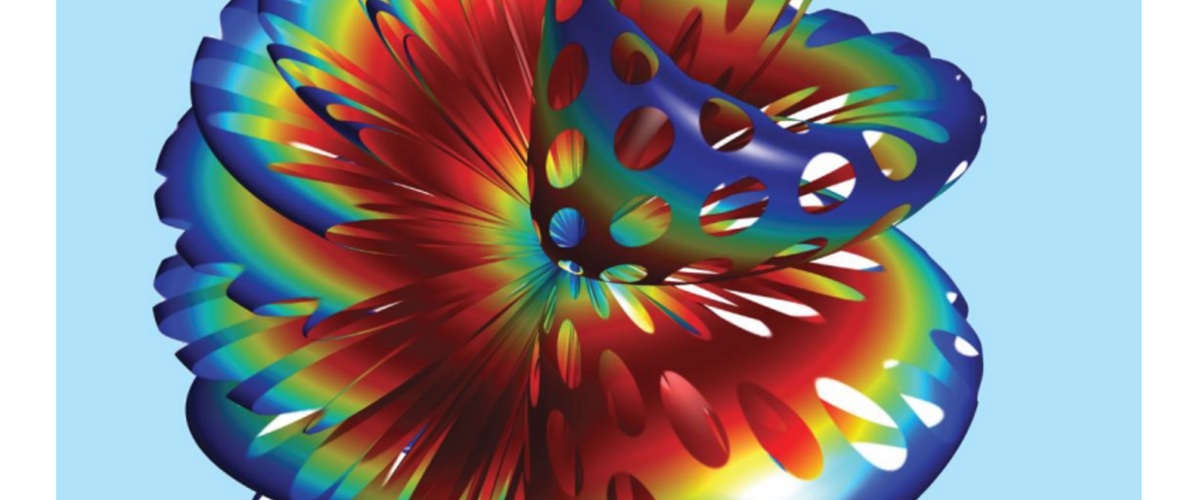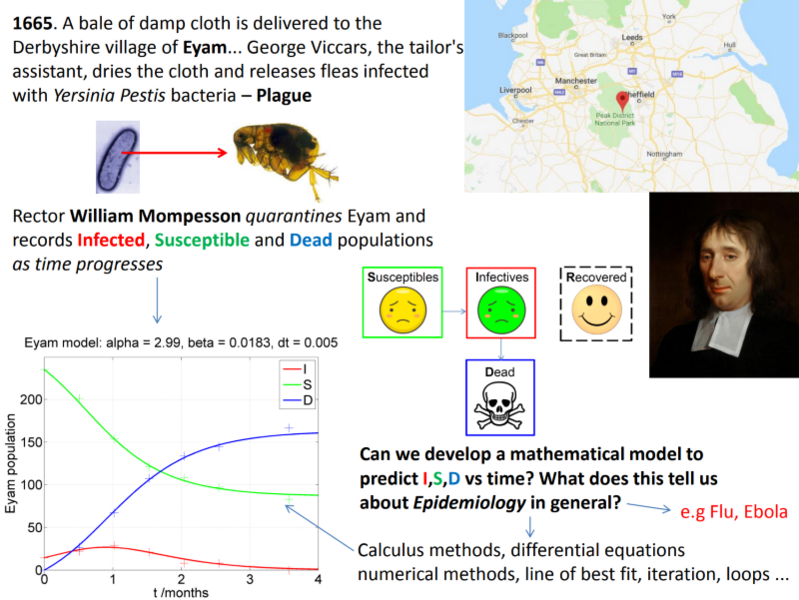

New Computational Challenge
Encouraging Exploration
I’ve always been fascinated by applied mathematics, which essentially comprises Physics (my subject) and Engineering (my pre-teaching profession). The differences between Physics and Engineering are mostly cultural, and relate to the kind of stories (contexts) and associated mathematical models you might wish to construct. Dr Cullerne first introduced me to a gruesome seventeenth century plague story about a small village called Eyam in Derbyshire, after his Div performed a play (The Roses of Eyam) responding to the theme of 'Human Suffering.' I was particularly interested to hear how he was introduing Calculus to find a quantity from a description of its rate of change - using data on Susceptible, Infective and Deceased subsets of the Eyam population during the plague outbreak. These sobering human tallies had been dutifully recorded in the Parish records by the young rector William Mompesson, who heroically instigated a quarantine and probably saved countless lives in the surrounding towns.
As Dr Cullerne and I then discovered with Eyam, choosing a suitably interesting story can incentivize an exploration of a significant part of the mathematics canon. Over the next few years we published a trio of Physics Education papers, two relating to Eyam, and shared this learning via lectures and seminars with hundreds of students at Winchester and our partner schools, who experienced, in essence, a basic course in Epidemiology.

Image from the mathematical modeling project relating to the plague outbreak in the Derbyshire village of Eyam in 1665
A New Approach
For my part, the core of the Eyam enterprise was the creation of computer models, starting with simple spreadsheets and building up to graphical interfaces encoded in languages such as Python and MATLAB. I believe this process has significant value as an educational concept and forms one of the key ideas in my book, Science by Simulation, which was published by World Scientific in 2022. Science by Simulation is more a collection of stories and recipes than a textbook: providing readers with sufficient instruction and encouragement to build the models themselves. I have endeavored to progressively incorporate this approach into my teaching, and last year the British Physics Olympiad (BPhO) established a new Computational Challenge that is very much intertwined with Science by Simulation.
Computational Challenge 2023
Uniquely, the BPhO Computational Challenge is an extended three-month project rather than one intense examination. Bronze, Silver and Gold standard activities are posed and participants have a free hand in the choice of computational tool used. Assessment is via a two-minute YouTube video and pupils can enter the challenge individually or in pairs. I run a weekly online seminar course, which precedes the Challenge, to help students prepare and learn. Each week there is an introduction to a different physics model and how one might analyse it computationally.
The response to this year's Challenge seminars has been very encouraging with over 600 pupils, and their teachers, logging on weekly from across the UK and internationally. The seminar course is free and open to all. Registration is via the BPhO website, link below. The 2023 Challenge will be released just before Easter.

 Head back to stories
Head back to stories